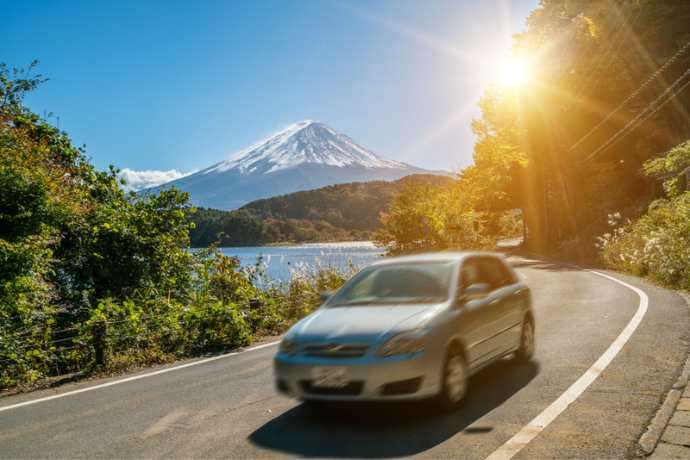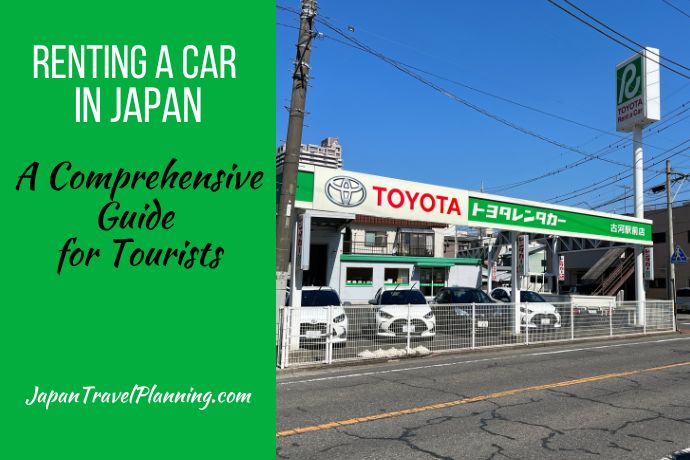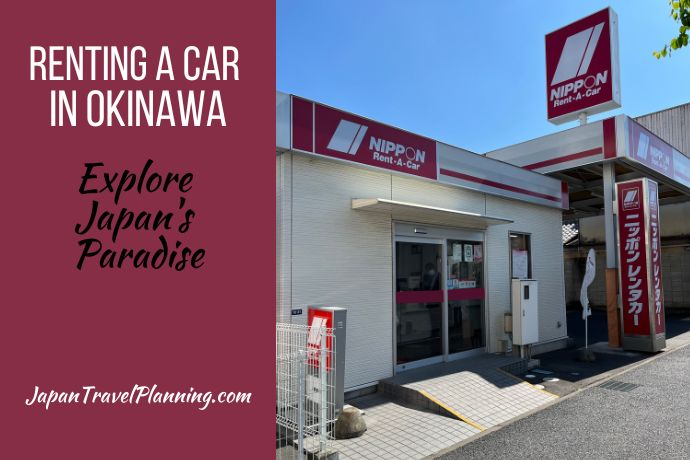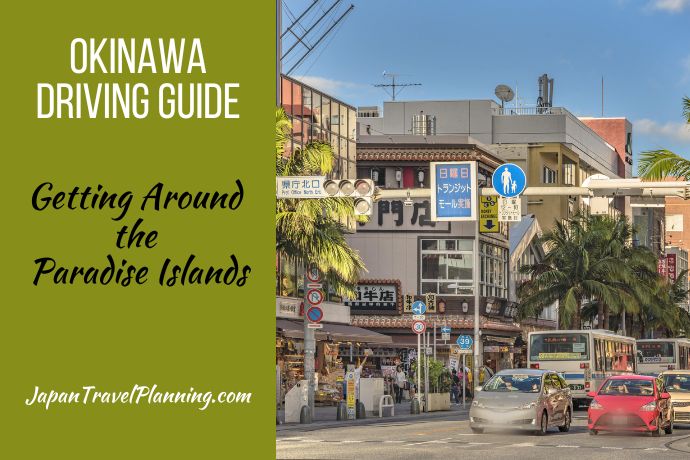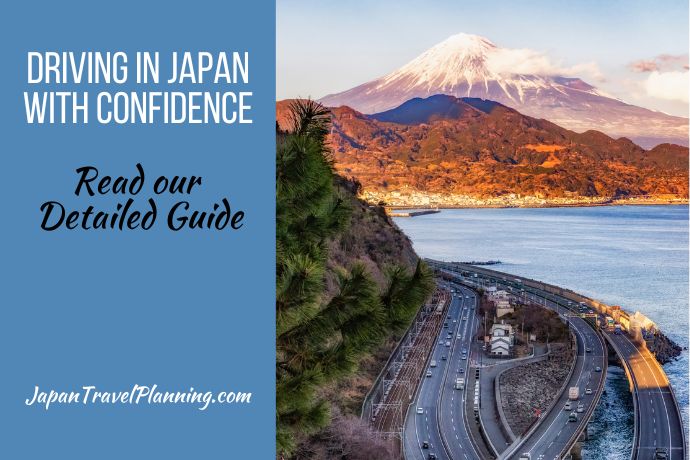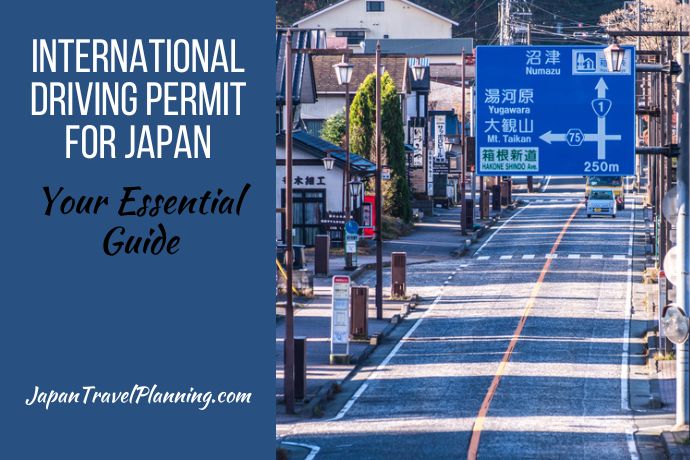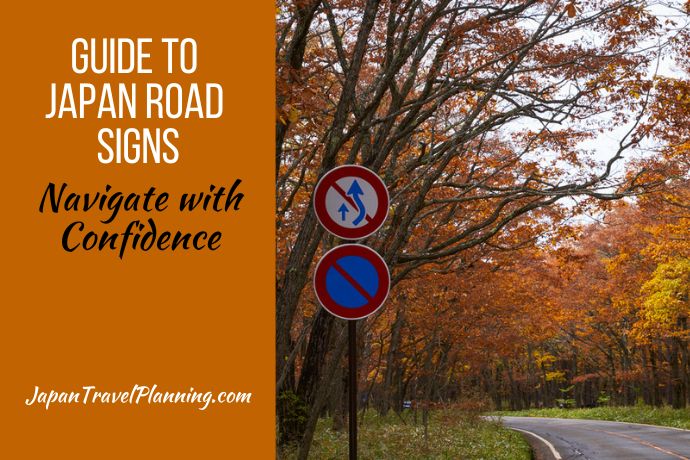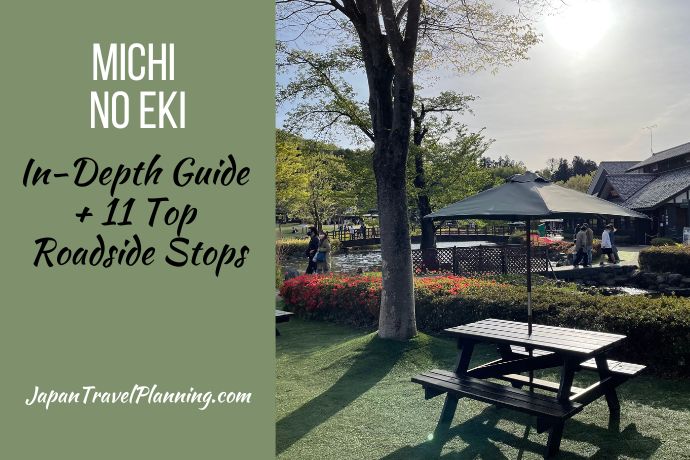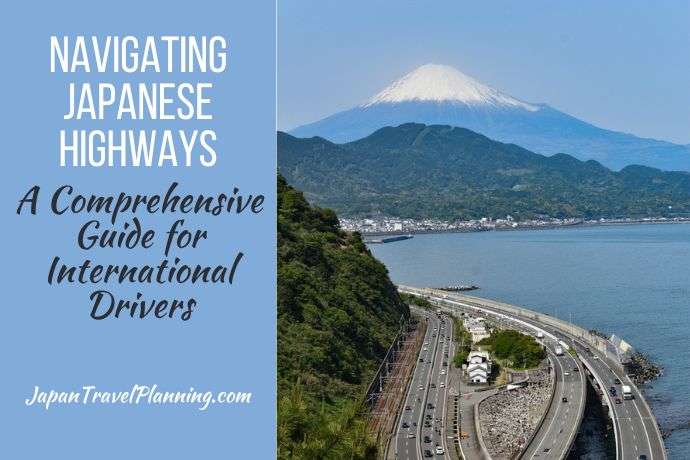Are you curious about what Japan looks like away from the train lines? What will you see if you take the less-beaten roads? For those comfortable behind the wheel, renting a car and driving in Japan can offer a more intimate glimpse into the heart of the country.
I am an experienced driver with over 15 years of first-hand knowledge of Japanese roads. My aim is to help you overcome the challenges of driving in Japan and offer you a smooth and rewarding driving experience.
I have driven in Okinawan typhoons, Tokyo thunderstorms, and Hokkaido’s meter-deep snow drifts. It has given me valuable lessons in the various driving conditions you can meet in Japan.
I am an expert at navigating the different types of roads you will find and will help you whether you want to get there as fast as possible or you want to slow down and see the sights. Whatever your choice, I have been there before you – and will show you the way.
From understanding road rules and obtaining an International Driving Permit (IDP) and renting a car to navigating gas stations, traffic rules, parking, highways, traffic signs and traffic lights, I will share practical insights so you can more confidently get out and enjoy the roads of Japan.
This article summarises people’s key issues and concerns when driving in Japan. I then provide links to more detailed articles I’ve written on each topic.
Disclaimer: This article contains affiliate links. If you book after clicking on one of these links then we may receive a small commission at no extra cost to you.
- Easy comparison of multiple car rental provider options using ToCoo!
- Use coupon code K49O12 to get your 1,000 yen discount
- ToCoo! is a local Japanese car comparison site that has the most options available
- Clear description of included protection and excess
- Good cancellation options
- Child seats, GPS, electronic toll cards, second driver and more are available as add-ons
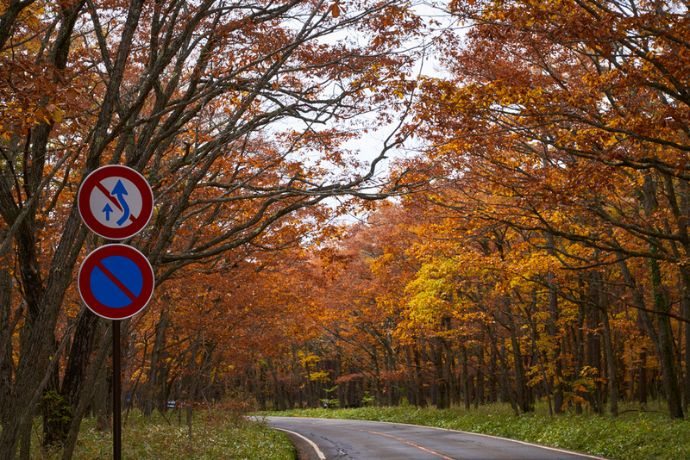
Japanese Roads and Expressways
Driving in Japan as a tourist is easy – if you stay out of the big cities, which were never built for cars. Driving is the only way to get around some parts of the countryside.
However, Japan is more than just the small countryside lanes between the rice fields. The country is crisscrossed with modern expressways, elevated over the forest and penetrating the mountains, tunnels, and bridges, making Japan driving a smooth and fluid experience, even in bad weather.
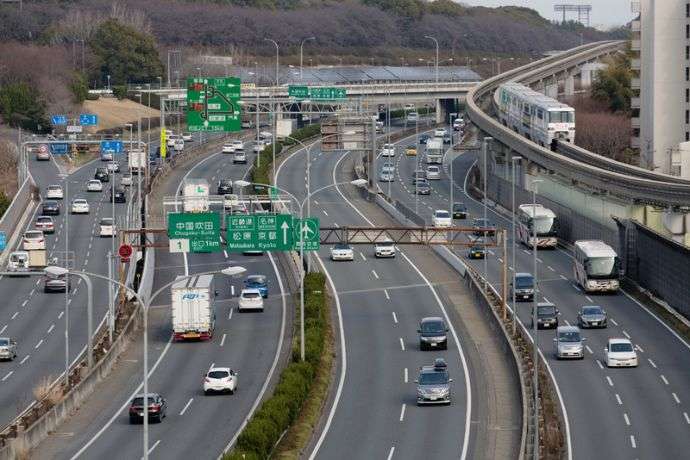
I have written a separate article about driving on Japanese highways that will provide you with deeper knowledge.
If you are asking yourself, “Is driving in Japan difficult?” the answer is no – if you keep to the expressways and stay out of the big cities.
Japan Road Rules
Driving in Japan as a tourist means a lot of driving on expressways, but even if you try to stay out of the big cities, you will pass through many smaller towns that require you to be no less watchful than when driving in Tokyo. Tokyo driving is no different from driving in small cities – only multiplied by ten.
Driving through Japan, you will notice how smooth and well-kept the roads are; you are also likely to see that drivers tend to ignore the speed limits, at least up to a point.
Driving Age
When you have been driving since you were 18, the legal driving age in Japan, following written and unwritten rules comes smoothly. Like many Japanese drivers, you may forget rules or miss signs as you age.
Many drivers are still on the road in their 80s or even 90s, although their driving ability has drastically decreased. They mistake the accelerator and brakes and may even forget to drive to the left – which can cause terrible accidents since the driving side in Japan is the left, and that is where all others are driving.
Synchronise with Local Drivers
Driving a car in Japan means having a relationship with other drivers on the road, making traffic flow as smoothly as possible.
You will be an obstacle if you follow the speed limit to the letter and can even get a citation from the police for hindering other traffic – if you drive much slower than the posted speed limit.

The art of driving a car in Japan takes the locals many years to master, but nobody expects you to know all the rules and get everything right when you are a foreign driver. As long as they can know you are a foreigner, that is.
Working with local drivers is one of many driving in Japan tips you will find in the linked articles.
Specific Driving Laws
The most important advice, however, is to follow the Japanese driving laws. Like most rules and laws in Japan, they include exceptions. But there are three areas where the driving laws in Japan are completely draconian: driving under the influence, wearing seatbelts, and drivers using cell phones.
Japan effectively has zero tolerance for driving under the influence of alcohol, and driving while taking medication that makes you drowsy is also prohibited. As all narcotic and mind-influencing drugs are also strictly prohibited, there can be no discussion of driving under the influence of drugs. It is simply prohibited.
The same goes for driving while using cell phones. It is also simply prohibited. Driving while talking, not to speak of driving while texting, can put you in jail. This is one reason why you will see cars stopped at the side of the road, warning lights flashing: the driver is taking a call.
There are no exceptions to the rules regarding cell phones and drunk driving, but there is one exception from the rule that everyone in the car has to wear a seatbelt, even small children in child seats.
When transporting a sick child who is too ill to sit in their seat, they do not have to wear a seatbelt. Hopefully, that is not something that will happen to you as you are driving around Japan.
You can read more about the detailed rules that apply to Japanese traffic in my article about Japanese traffic rules.
Japan Road Signs and Traffic Lights
Drive in Japan, and you will likely encounter a confusing road sign sooner or later. As a tourist driving in Japan, you may try to stay mainly on the expressways, but as soon as you get onto more minor roads, you will find road signs you have never encountered before.
I wrote a separate article explaining the street signs. Most of them you will only find in Japan, and the meaning is grounded in Japanese culture, which can be difficult at first. You need to memorise some of the most important ones so you do not make a mistake and cause an accident.
Traffic lights are different, even if the word for the colour of the ‘go’ traffic light translates as blue rather than green.
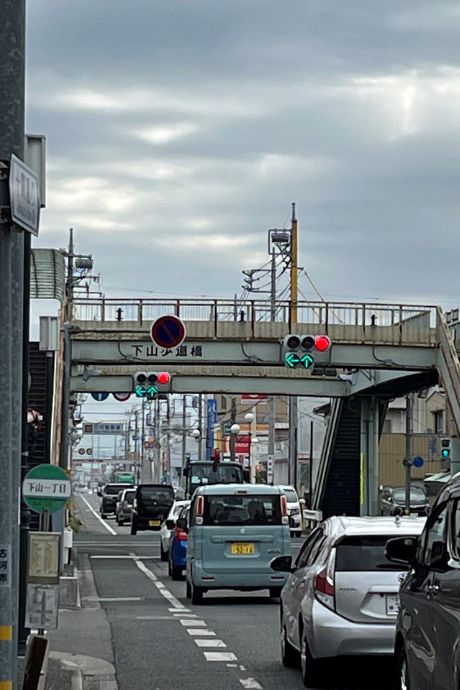
They are usually as easy to understand as the traffic lights in your home country. One exception is when the traffic lights sprout arrows pointing in all imaginable directions.
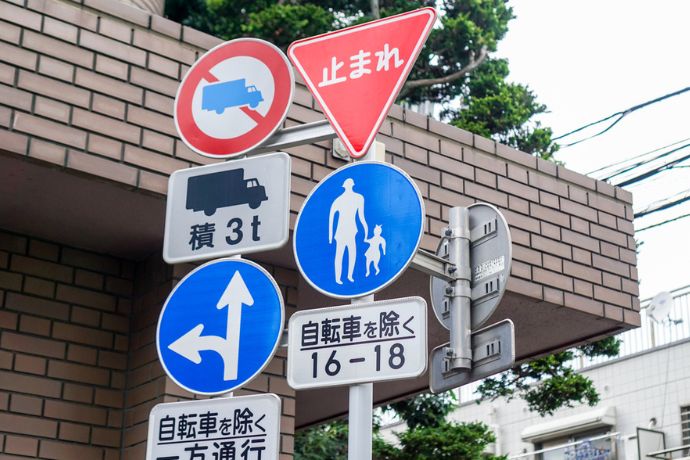
You can read more in the article I wrote about traffic lights. One of my best tips for driving in Japan is to not to be the first car in line, but to try to be number two or three (if possible). That way, you can figure out which way other cars turn before you go.
International Driving Permits and Translations
To drive in Japan, you must have the required documentation. This includes your driver’s license from home, an International Driving Permit (or IDP for short) or valid license translation, and your passport.
The IDP must be issued under the UN Geneva Treaty of 1949. Permits issued under either the 1926 or the 1968 convention are invalid in Japan.
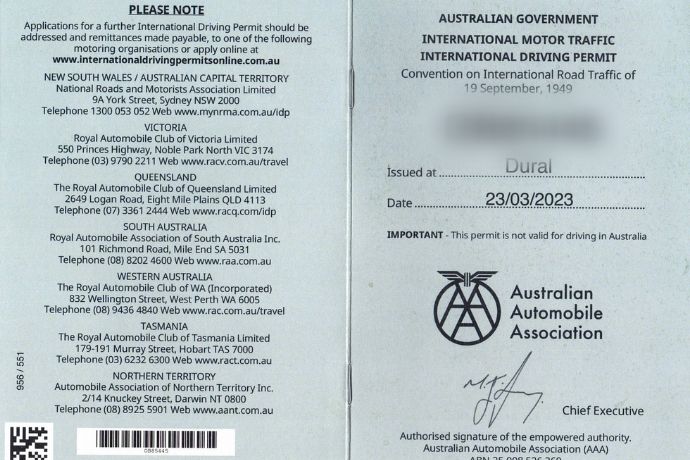
If you are from France, Germany, Belgium, Switzerland, Monaco or Taiwan, you won’t be able to get an IDP. You will instead need an authorised translation of your license.
It is quite straightforward for those eligible to get their license translated (check out the Japanese Automobile Federation, JAF, website). The main complication is that you must apply for it once in Japan (unless you have someone else who can act on your behalf). It takes one to two weeks for the authorised translation to come through.
For people from the rest of the world, one of the best driving tips in Japan is to join JAF, as the membership can give substantial discounts and free road support. But it is available in Japanese only.
To find out more about IDPs (and authorised license translations), you can read more about it in the article I wrote about the IDP. The method is different between different countries, as the application for the IDP is handled at the national level.
Each country decides how to issue International Driving Permits as it is not an international driver’s license. It’s a document proving you have a driver’s license for people who can not read it, including most Japanese police officers.
Renting a Car in Japan
Renting a car in Japan is the main viable way a temporary visitor can drive in Japan. Japan allows visitors to borrow cars, but the driver and owner share some responsibility. So, as a temporary visitor, renting a car in Japan is much easier. I wrote a separate article to help you figure out how.
It is easy to rent a car in Japan as long as you have the correct documentation:
- A driver’s license, an International Driving Permit (as already mentioned), and your passport,
- A credit card to take your deposit, and of course,
- The reservation, including any extra equipment needed, such as child seats.
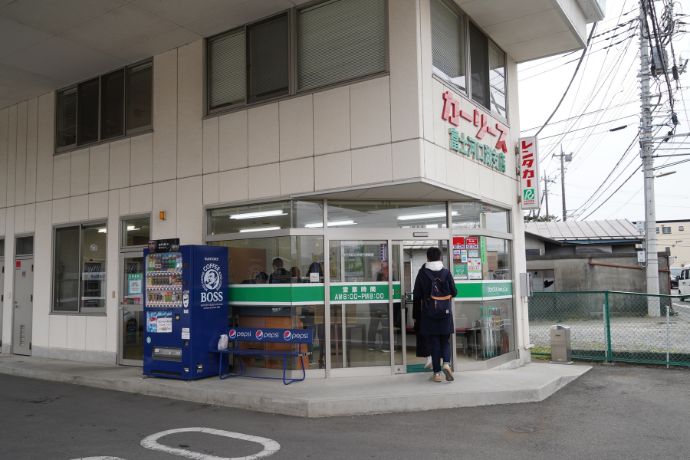
Present the documents, make a simple check detailed in the article about renting a car, and off you go.
You need to check your insurance, but extra insurance is usually unnecessary. Before renting, you must check whether the rental company offers an English emergency number.
As with insurance and umbrellas, nothing happens if you have one. But if something happens, like you get into an accident, then having an English helpline to call will be invaluable. It is doubtful that any of the first responders you encounter will speak anything but Japanese.
Japanese Gas Stations
While electric cars are available in Japan, most cars are hybrid cars.
As with any gasoline car, they need to be filled up. While many gasoline stations have shut down and others have been transformed from manual service to self-service, finding a gasoline stand to fill up your car is still easy. As long as you stay in the reasonably built-up areas, that is. In the countryside, gasoline stations can be so far apart that you must plan. Make sure you have a full tank before you set out.
Filling up the tank is relatively easy as long as you choose the right gasoline. But you need to have a credit card. I have also written a more detailed article on Japanese gas stations.
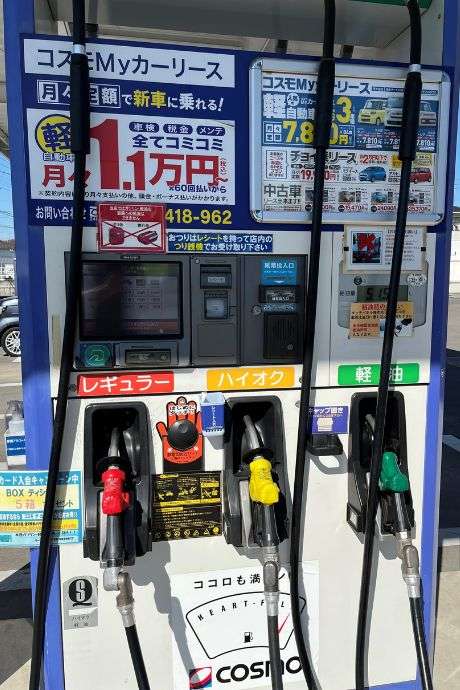
Even if some gasoline companies offer cash payments and English service, walking yourself through the payment process before you try will make it easier.
Parking in Japan
Driving in Tokyo is easier than finding a reasonably priced parking space in this busy city. Parking can be almost as expensive as the daily car rental fee, and unless your hotel offers free parking, having a car that needs to be parked in a big city is an unnecessary expense.
In the city centres, parking lots are small and automatically monitored, apart from being expensive. But that is only true for some parking in Japan.
Parking around shopping centres is free and plentiful, and in mid-sized cities, there are typically parking garages near the stations – check what stores will validate your tickets before you park.
Read more in my article about parking in Japan.

- Easy comparison of multiple car rental provider options using ToCoo!
- Use coupon code K49O12 to get your 1,000 yen discount
- ToCoo! is a local Japanese car comparison site that has the most options available
- Clear description of included protection and excess
- Good cancellation options
- Child seats, GPS, electronic toll cards, second driver and more are available as add-ons
Frequently Asked Questions about Driving in Japan
As you prepare to drive in Japan, you might have some pressing questions about what it is like. Here are the answers to the most common queries to help you navigate the roads of Japan with ease and confidence.
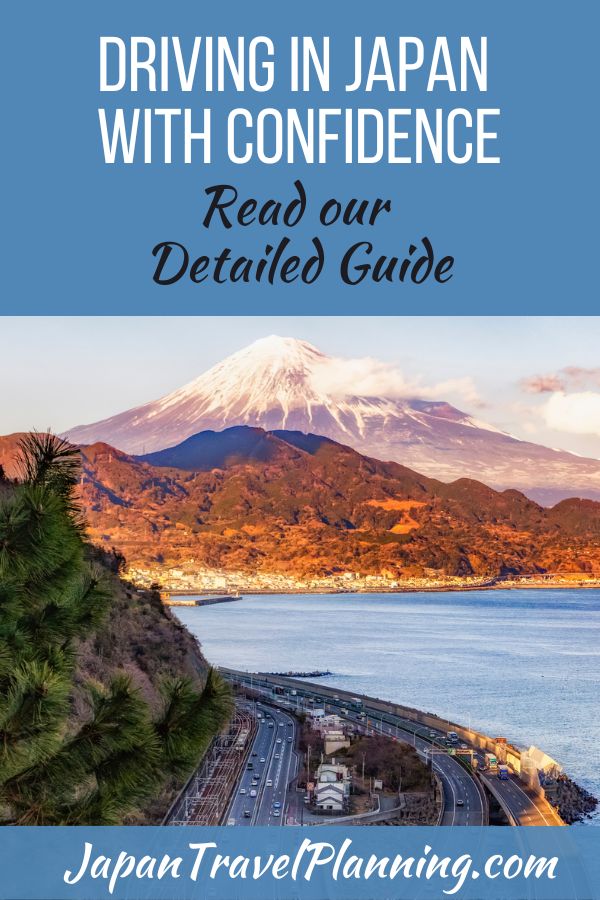
You may also like:
Renting a Car In Japan: A Comprehensive Guide for Tourists
Renting a Car in Okinawa: Explore Japan’s Paradise
Driving in Okinawa Guide: Getting Around the Paradise Islands
Driving in Japan with Confidence: Read our Detailed Guide
International Driving Permit for Japan: Your Essential Guide
Japan Traffic Lights Guide: More Than Red, Yellow, and Green
Guide to Japan Road Signs: Navigate with Confidence
Michi no Eki: In-Depth Guide + 11 Top Roadside Stops
Navigating Japanese Highways: A Comprehensive Guide for International Drivers
Join the Japan Travel Planning Facebook Group or Discord Server
You are also welcome to join our Japan Travel Planning Facebook Group and our Japan Travel Planning Discord Server – they are great resources to enable you to ask questions about your upcoming trip to Japan!
Disclaimer: This article contains affiliate links. If you book after clicking on one of these links then we may receive a small commission at no extra cost to you.

